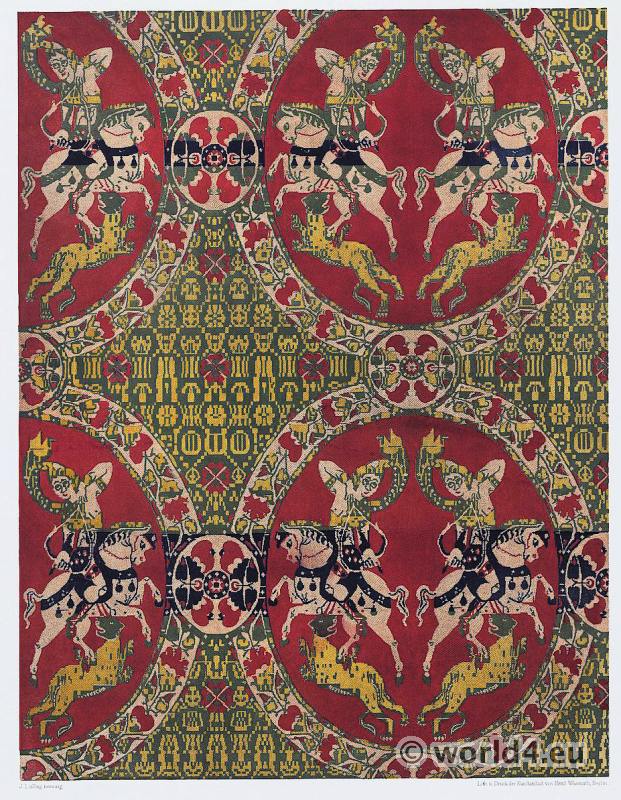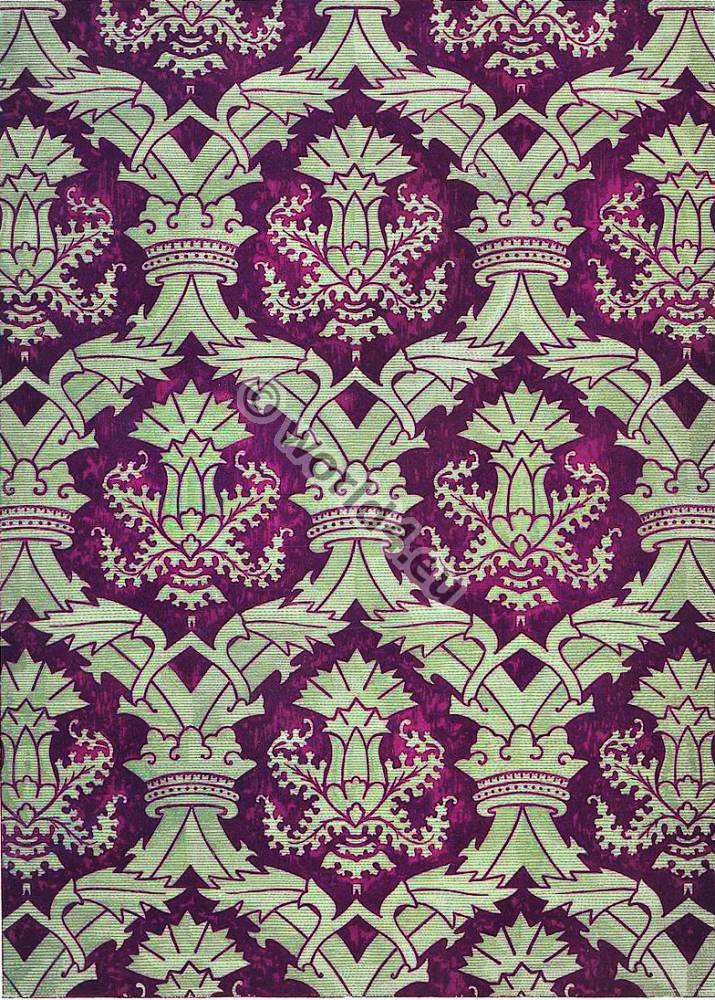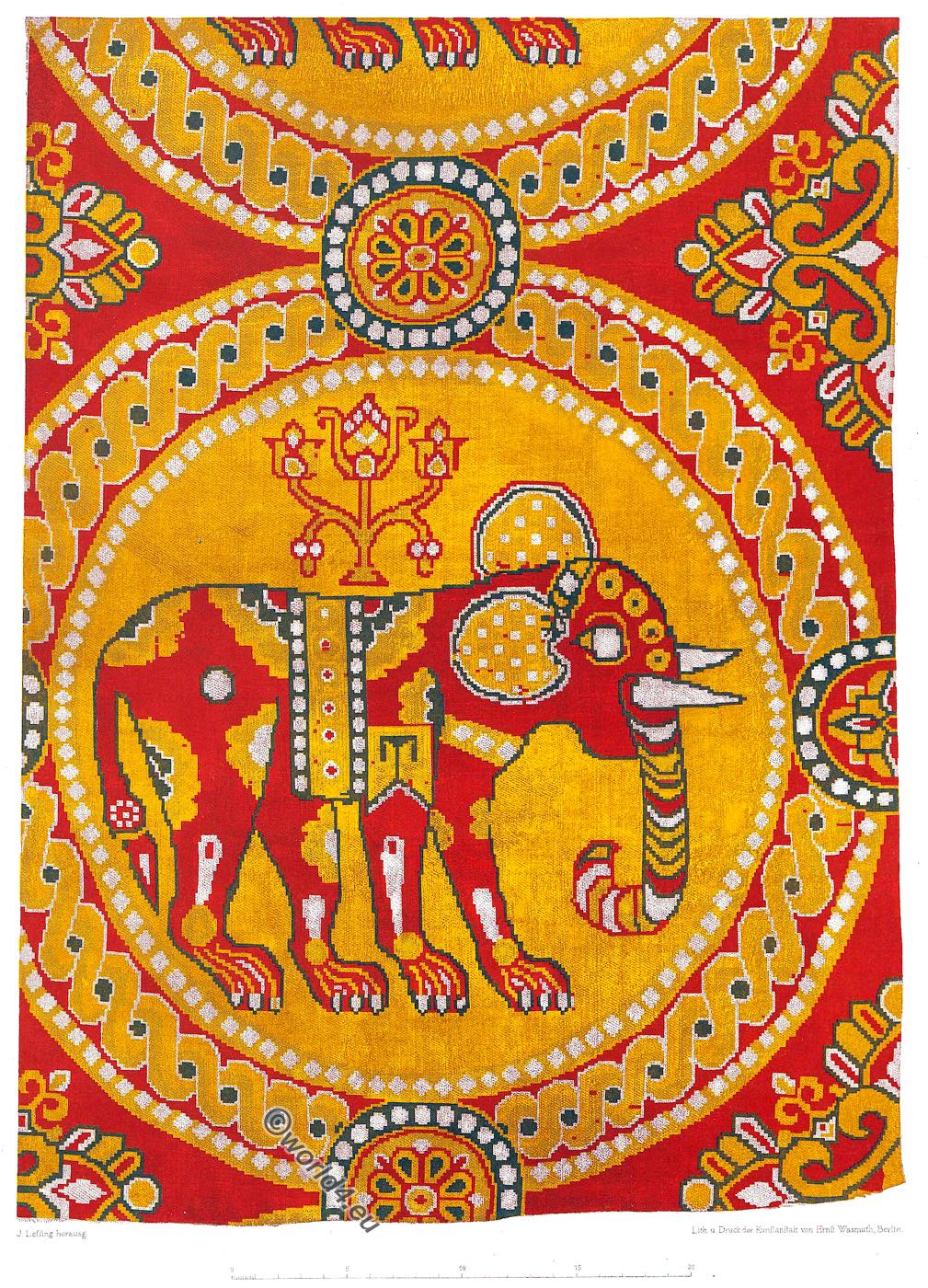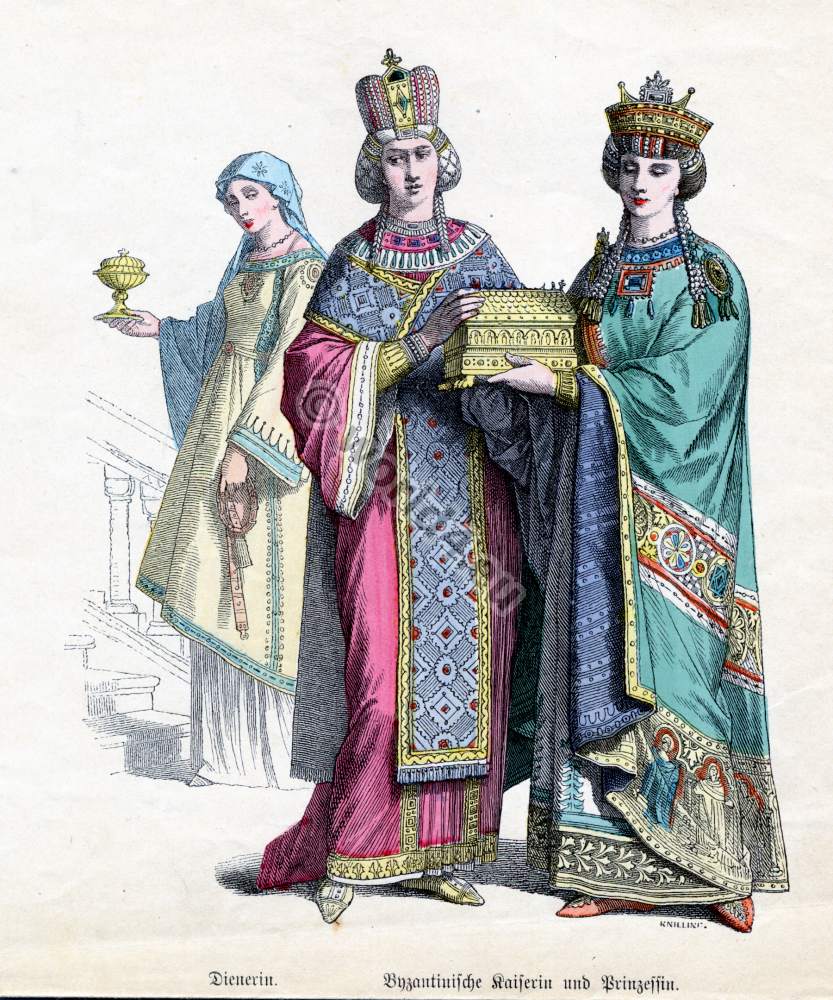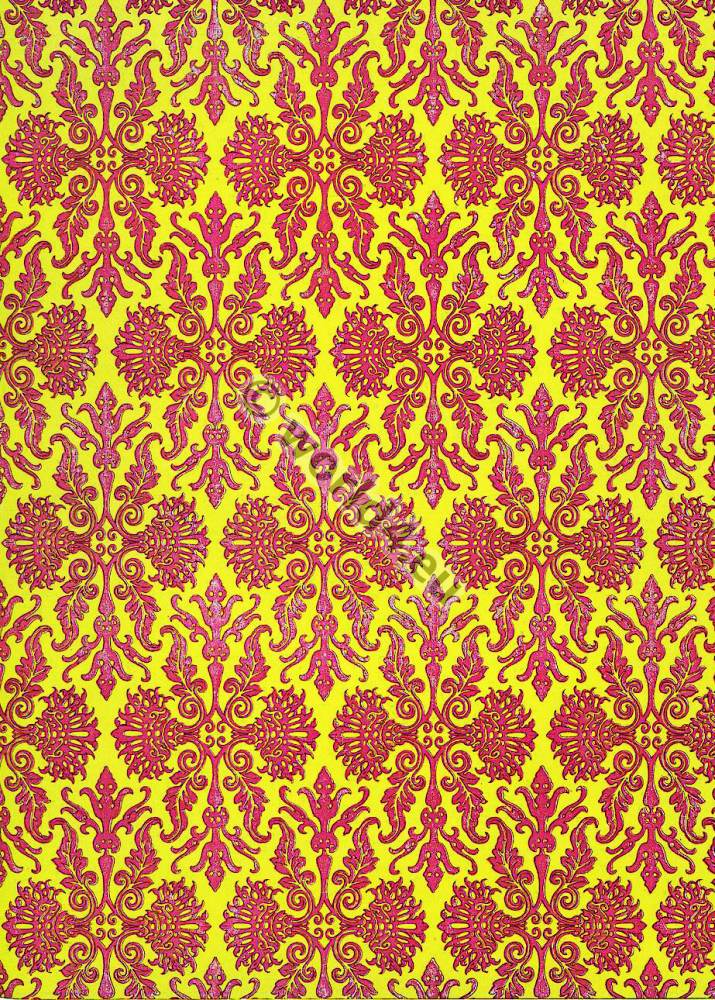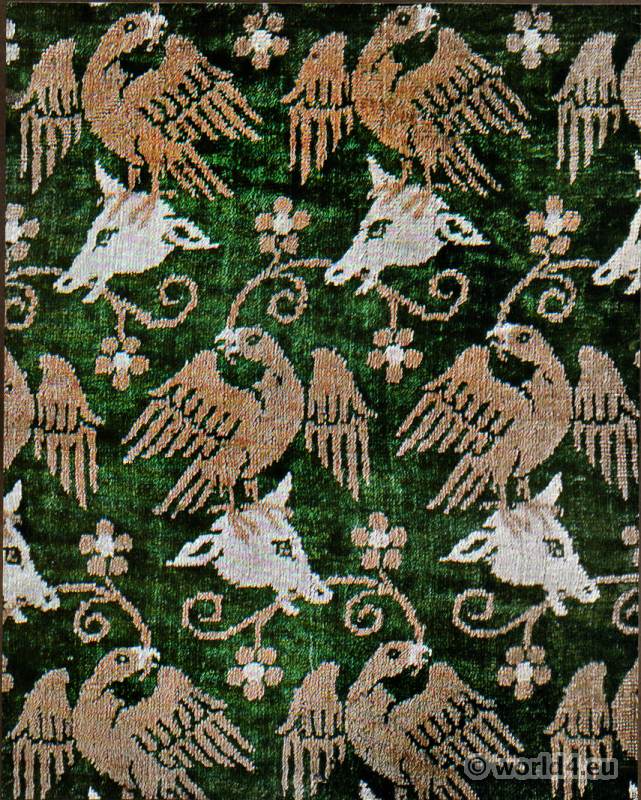Byzantine silk fabric by the mantle of St. Fridolin. 4th to 8th century.
Silk fabric multicolored stronger in body formation. Pattern opposite, orderly rows of large circles. Each of them is formed by an ornamental band, white with colored flowers and leaves. In every circle on red background two Amazons warriors on horseback shooting backwards turned on a panther. The circles are occupied at the contact points with small rosette fields.
The spandrels between the circles contained on purple blue Basically a yellow diamond pattern with red flowers. The fabric comes from the church to Säckingen and is considered Coat of Saint Fridolin, the other residues are the same there blended and used in new garments of splendor. In every circle on a red background two Amazons are shown.
The pattern shows a transformation of a Sassanid pattern of VI-VII. Century. The fabric itself belongs to the Byzantine period of the VII.-VIII. Century.
Fridolin of Säckingen died around 540.
Saint Fridolin of Säckingen, monk and Christian missionary, “Apostle of Alemania”. Born in Ireland, abbot of Saint-Hilaire in Poitiers, he goes to Säckingen on the Rhine near Basel, where he founds a church and a monastery. He is the patron saint of the Swiss canton of Glarus, whose coat of arms depicts him as a pilgrim. He died around 540. Feast day on 6 March.
Fridolin was an Irish wandering monk who first worked in Poitiers in Gaul, where he raised the bones of St Hilarius of Poitiers and built a church. However, the Germanic name Fridolin speaks against his Irish origin. According to legend, Hilarius commissioned him in a dream to build a monastery on a certain island in the Rhine.
On the way from Poitiers to Säckingen, Fridolin founded a number of churches, all of which he consecrated to Hilarius, including those on the Moselle and in Strasbourg. Fridolin founded Säckingen Abbey, the oldest monastery in southern Germany, which became the starting point for missionary work in what is now Baden-Wuerttemberg. Fridolin is therefore also known as the apostle of the Baden Oberland. A biography, the so-called Fridolinsvita, was written down in the 10th century by a monk named Balther von Speyer.
Fridolin’s bones in the collegiate church in Säckingen, called Fridolinsmünster, are still a destination for many pilgrims today. Every year, the magnificent baroque silver shrine is carried through the streets of the city on the Upper Rhine in a large festive procession with the participation of music bands, people in traditional costume and knights and squires in medieval costumes.
In church representations Fridolin is often depicted together with a skeleton. The legend says that he was given large parts of the Glarnerland as a gift by the dying, rich Ursus or Urso, but his brother Landolf would not acknowledge this. Fridolin had therefore brought Ursus out of the grave as a witness to help him.
Landolf was so shocked and ashamed when he saw his brother, already in decay, appearing before the court that he gave Fridolin his part of the Glarnerland, which in this way came entirely to the monastery of Säckingen. Thus Fridolin became the patron saint of the Canton of Glarus (Switzerland), in whose coat of arms he can be seen as a missionary with a walking stick and a Bible.
Fridolin is called upon in cases of leg complaints, livestock epidemics and for good weather.
Related
Discover more from World4 Costume Culture History
Subscribe to get the latest posts sent to your email.

